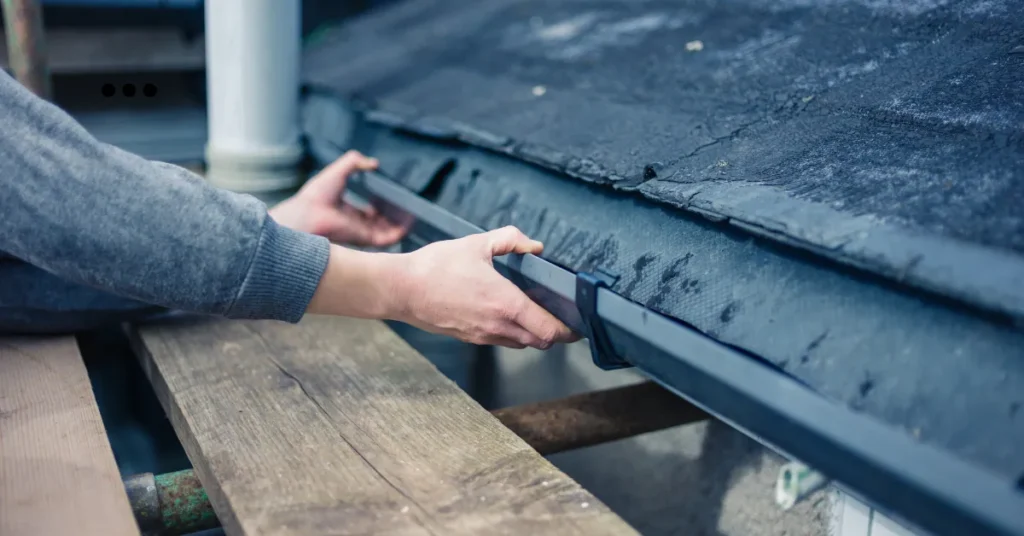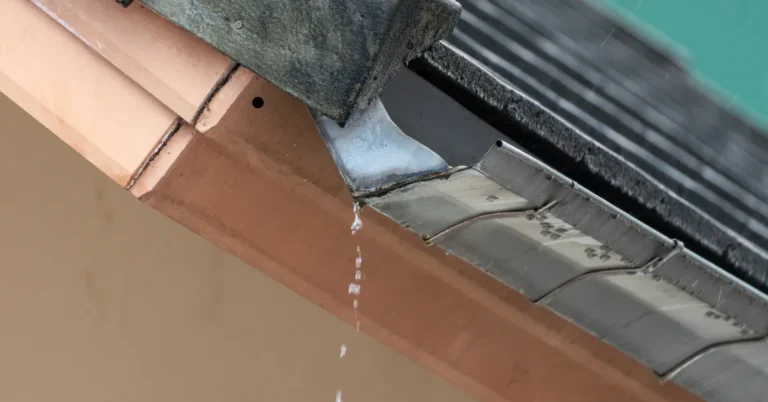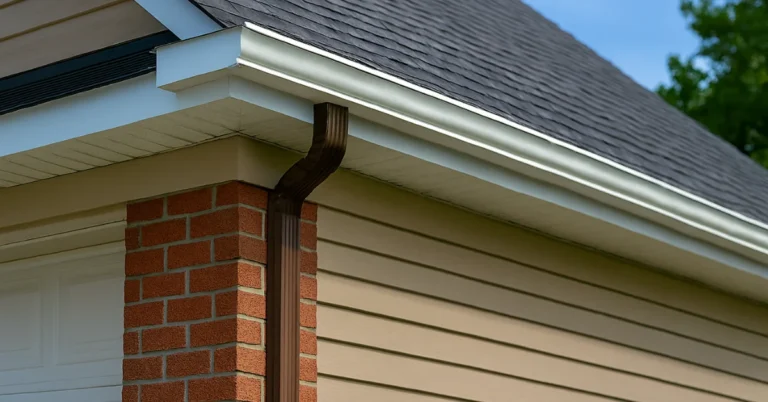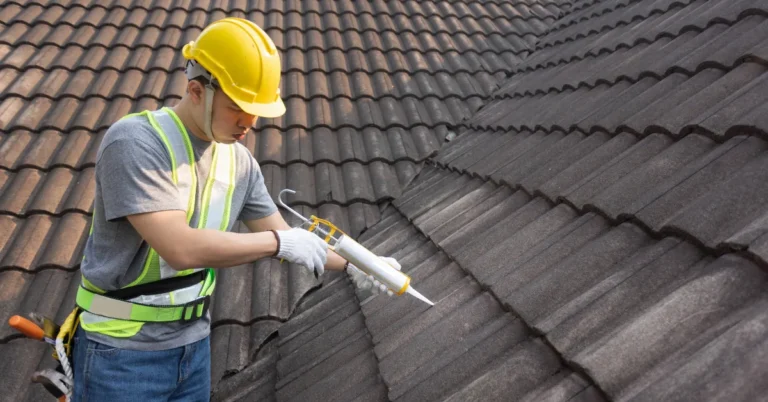When it comes to protecting your home from water damage, choosing the right gutter size is an important decision. Homeowners often compare 5 vs 6 inch gutters because these are the two most common sizes used in residential properties. While 5-inch gutters are the traditional choice for many homes, 6-inch gutters have become increasingly popular for larger roofs or areas with heavy rainfall. Both 5 inch or 6 inch gutters can effectively manage rainwater, but each size has its own set of advantages and drawbacks. In this guide, we’ll explore the differences between 5 inch gutters vs 6 inch gutters to help you determine which option is the best fit for your home.
Understanding Gutter Sizes
When deciding between 5-inch and 6-inch gutters, it helps to understand exactly what these measurements mean. The size refers to the width across the top opening of the gutter, which determines how much rainwater it can collect and carry away from your roof.
- 5-inch gutters: The most common choice for residential homes. They work well for average roof sizes and areas with moderate rainfall.
- 6-inch gutters: A larger option designed to handle more water flow. These are especially useful for wide or steep roofs and regions with frequent heavy rain.
In short, both 5-inch and 6-inch gutters serve the same purpose, but their performance differs depending on your home’s design and climate.
Comparison of 5-Inch vs 6-Inch Gutter Sizes
| Feature | 5-Inch Gutters | 6-Inch Gutters |
|---|---|---|
| Standard Use | Most residential homes | Larger homes, steep or complex roofs |
| Water Capacity | Handles moderate rainfall | Holds nearly 50% more water |
| Clogging Risk | Higher (smaller opening) | Lower (wider opening) |
| Cost | More affordable | Higher per foot |
| Appearance | Sleeker, less noticeable | Bulkier, more prominent |
Key Differences Between 5 and 6 Inch Gutters
The choice between 5-inch and 6-inch gutters often comes down to performance. While both serve the same purpose of directing water away from your home, they differ in how much water they can carry, the types of roofs they suit best, and the amount of maintenance they require.

Water Capacity
One of the most noticeable differences is water flow. 5-inch gutters are suitable for handling regular rainfall on average-sized homes, but they can quickly overflow during heavy storms or when managing runoff from large roof surfaces. In comparison, 6-inch gutters can hold nearly 50% more water, making them far more efficient in regions with heavy rainfall or homes with larger roofs. This difference in 5-Inch vs. 6-Inch Gutters water flow is often the deciding factor for homeowners who experience frequent downpours.
Size and Pitch
The size and slope of your roof directly affect which gutter system will work best. Homes with smaller, less complex roofs generally function well with 5-inch gutters, as the amount of runoff is moderate. However, if your home has a steep pitch or a large, multi-surface roof, water moves faster and in greater volumes, which can easily overwhelm smaller gutters. In such cases, 6-inch gutters are the better choice. This is why many homeowners ask, “Are 6 inch gutters better?” because for larger or more demanding roof structures, they usually are.
Durability and Clogging
Another key difference is long-term maintenance. With their narrower opening, 5-inch gutters are more prone to clogging from leaves, twigs, and other debris, which means they often require more frequent cleaning. 6-inch gutters, on the other hand, have a wider channel that allows debris to pass through more easily, reducing the risk of blockages and ensuring better water flow over time. In terms of 5 inch vs 6 inch gutters maintenance, the larger option typically provides greater durability and requires less upkeep.
Cost Comparison: 5 vs 6 Inch Gutters
Cost is another important factor when deciding between 5-inch and 6-inch gutters, as the size directly affects both material and installation expenses. On average, 5-inch gutters cost between $5 and $9 per foot, making them the more affordable option for most homeowners. By comparison, 6-inch gutters cost per foot typically ranges from $7 to $12, depending on the material and the complexity of the installation.
The price difference between 5 inch and 6 inch gutters usually comes out to an additional $2–$3 per foot. While this may seem minor on a small section of guttering, the total can add up significantly when covering an entire home. However, many homeowners see the added expense as a worthwhile investment, since the larger gutters reduce overflow, lower the risk of water damage, and often require less maintenance in the long run.
Pros and Cons of Each Size
When deciding between 5-inch and 6-inch gutters, weighing the pros and cons of each size makes the choice clearer. Both options serve the same purpose, but their benefits and drawbacks vary depending on your home’s roof size, local climate, and budget.
5-Inch Gutters
Pros: The main advantage of 5-inch gutters is cost-effectiveness. They are the standard option for most homes, which makes them widely available and easy to install. For small to medium-sized roofs and areas with normal rainfall, they provide reliable performance without looking bulky.
Cons: The drawback is their limited capacity. In areas with heavy rainfall, 5-inch gutters can overflow, especially on large or steep roofs. They are also more prone to clogging since the narrower channel leaves less room for debris and water flow.
6-Inch Gutters
Pros: The biggest strength of 6-inch gutters is their larger capacity. They can handle almost 50% more water than the smaller size, which makes them ideal for big roofs, steep slopes, or regions with frequent storms. The wider opening also reduces clogging, which means less frequent cleaning and maintenance.
Cons: The main disadvantage is the higher installation cost, since more material and labor are required. Additionally, on smaller homes, 6-inch gutters may look oversized and stand out more than the traditional 5-inch style.
Which One Should You Choose?
When deciding between 5 or 6 inch gutters which is right for you?, the choice depends on your home’s roof, the climate you live in, and how much you’re willing to invest. Below are the key factors to guide your decision.
Rainfall in Your Area
Your local weather plays a big role in gutter performance.
- Moderate rainfall → 5-inch gutters are usually sufficient.
- Heavy rainfall or storm-prone areas → 6-inch gutters handle higher water volumes more effectively.
Roof Size
The design of your roof affects how quickly water runs off.
- Smaller or standard rooflines → 5-inch gutters are reliable and cost-friendly.
- Large, steep, or complex roofs → 6-inch gutters reduce overflow and provide stronger protection.
Budget Considerations
Your budget can determine which option makes the most sense.
- 5-inch gutters = more affordable upfront, easy to install, and the standard choice for most homes.
- 6-inch gutters = higher initial cost but lower risk of clogs and better long-term value.
By looking at these factors together, you can confidently choose the most common gutter size that offers the right balance of protection, appearance, and cost for your home.
Conclusion
When comparing 5 vs 6 inch gutters, the key differences come down to water capacity, roof compatibility, maintenance, and cost. 5-inch gutters are the traditional choice, offering a reliable and affordable solution for smaller homes or regions with average rainfall. Meanwhile, 6-inch gutters provide nearly 50% more capacity, making them a better option for larger or steeply pitched roofs and areas that experience frequent heavy rain.
Ultimately, 6-inch gutters are often the smarter investment if you want better protection, fewer clogs, and long-term peace of mind. However, for standard homes with moderate rainfall, 5-inch gutters remain an effective and budget-friendly option. To make the best decision, consult a professional gutter installation expert who can evaluate your roof size, pitch, and climate conditions.
FAQs
Do I really need 6-inch gutters for my home?
Not always. 6-inch gutters are most beneficial for larger homes, steep roofs, or areas with heavy rainfall. For average-sized homes in moderate climates, 5-inch gutters are usually sufficient.
Will 6-inch gutters look too big on a small house?
They can appear bulkier compared to 5-inch gutters, especially on smaller homes. However, many homeowners prefer the bolder look, and they blend in well when matched with the right fascia and trim.
How much more do 6-inch gutters cost than 5-inch?
On average, 6-inch gutters cost $2–$3 more per foot than 5-inch gutters. While they are more expensive upfront, they often save money long-term by reducing water damage and maintenance.
Which gutters clog less 5-inch or 6-inch?
6-inch gutters clog less because of their wider opening, which allows leaves and debris to pass through more easily. This means less frequent cleaning compared to 5-inch gutters.
Can I replace 5-inch gutters with 6-inch gutters?
Yes, most gutter systems can be upgraded. However, switching to 6-inch gutters usually requires installing larger downspouts as well, so it’s best handled by a professional installer.




